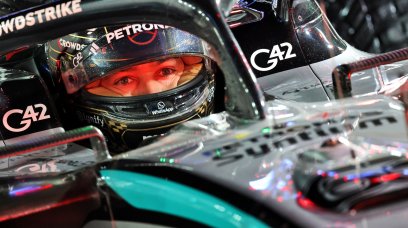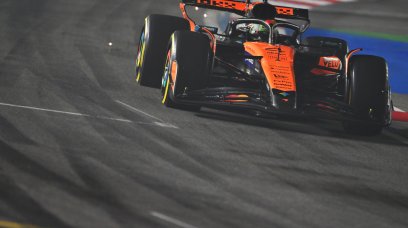One of the key areas of development for all Formula 1 teams this year has been the rear suspension, as they look to exploit the ground-effect as much as possible.
Stake F1 noted how switching from a pull-rod rear suspension to a push rod has been a "tough mechanical project" for its engineers, while Aston Martin's AMR24 features a push rod after its predecessor last year used pull rod.
Teams are expected to migrate towards this Red Bull-led trend sparked by its RB18, with Ferrari and Haas the only outliers on the grid.
It is quite a bold move considering Technical Director Enrico Cardile noted how "every area of the car" has been redesigned, with the team seeking to solve the aero 'peakiness' problem experienced by Carlos Sainz and Charles Leclerc last year.
“During the development, not only the development of this car, we investigated different suspension layouts," Cardile told media, including RacingNews365.
"For our targets, our flow management, we found a good compromise with the current layout of suspension. When I talk about compromise, I'm talking about performance, the compliance of the suspension, and so on.
"During this season, we are not planning to change the suspension layout. Then let's see through the development where we will end up, but so far we are happy with this configuration."
Viewed by others:
Why has Ferrari done the opposite?
The main advantage of the push rod layout enables teams to move the bulkiest part of the suspension internals up, creating more space to shape the diffusers and improve underfloor performance.
It also enables teams to better control the 'dive' effect under braking, giving the car more consistent behaviour at the front and for the rear-ride heights to run lower to increase the ground effect.
So why has Ferrari gone in the opposite direction? Although it is a pull rod layout in practice, the pick up points on the wishbones have changed to enhance the anti-squat effect with a push rod at the front to help with the anti-dive. Ferrari also kept much of the suspension elements inside of the gearbox casing, enabling them to further exploit space around the diffuser.
When asked by RacingNews365 if there was any advantage to staying with the pull rod layout, Cardile explained: "In reality our rear suspension is a bit different in terms of wishbone setup [and] the lower wishbone distribution compared to Red Bulls.
"We recorded good aero results moving towards this direction, while moving from push rod [to] pull rod we didn't measure a big advantage as such to justify some compromises in terms of weight or compliance. From there we evolved our suspension by keeping the same layout."
Although it has not copied one of the defining characteristics of the Red Bull RB19, Cardile is confident it has addressed the key area of complaints from the drivers last year.
"We wanted this year to achieve a certain lap time improvement by providing to our drivers a car that is nicer to drive and robust in every condition," explained Cardile.
"We did a huge effort on rethinking the car, with challenging targets, with the purpose of catching Red Bull."
Ferrari was the only team that beat Red Bull last season, and its focus on making the car easier to drive might enable its drivers to extract the last tenths of a second on track as it seeks to win its first title since 2008.
Don't miss out on any of the Formula 1 action thanks to this handy 2026 F1 calendar that can be easily loaded into your smartphone or PC.
Download the calenderMost read
In this article



























Join the conversation!